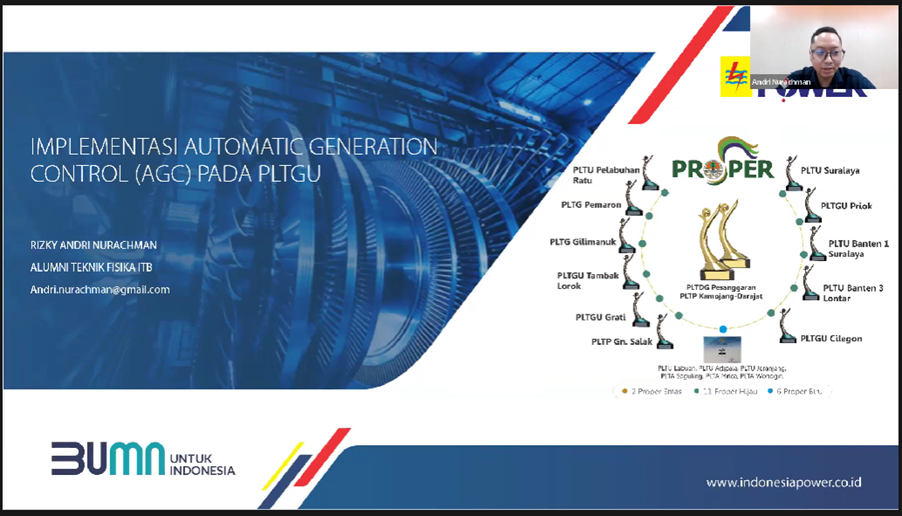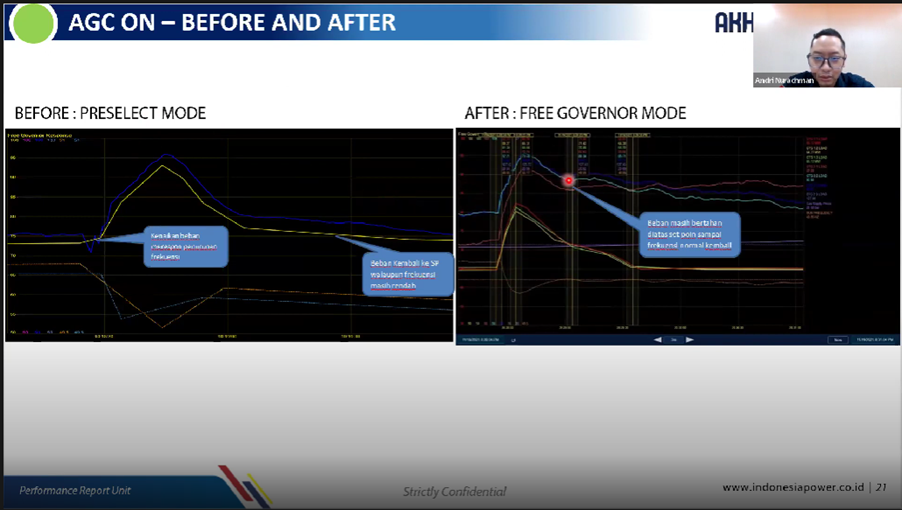New Tech in Combined Cycle Power Plant: Automatic Generation Control
By Adi Permana
Editor Adi Permana

BANDUNG, itb.ac.id – Energy transition in the industrial sector towards sustainable and renewable energy has started to flourish in many countries, Indonesia is no exception. Various sources and technologies required to produce renewable energy have been created and applied, with their source ranging from water, air, sunlight, geothermal, to steam gas.
Combined cycle power plant, called PLTGU (short for Pembangkit Listrik Tenaga Gas Uap) in Indonesia, has become one of the renewable energy plants that is being currently developed and implemented in Indonesia. In addition, a new technology known as automatic generation control has been created for the said plant.
Through Knowledge Sharing organized by the Vocational Board of Physics Engineering from the Institution of Engineers Indonesia on Wednesday (13/7/2022), an Instrumentation and Control Maintenance expert from PT Indonesia Power, Rizky Andri Nurachman, S.T., explained the topic of "Implementation of Automatic Generation Control for Combined Cycle Power Plants." Andri is also an alumnus of ITB’s Engineering Physics study program.
Combined cycle power plant (PLTGU) is the combination of both gas power plant (PLTG) and steam-electric power plant (PLTU). PLTGU works by using the heat from flue gas produced by PLTG to create steam which is then transformed into a working fluid in PLTU. One of Indonesia Power’s PLTGU is located right in Semarang, Central Java.
In the utilization of PLTGU, a new technology has emerged: Automatic Generation Control (AGC). AGC has a function to regulate the power output of multiple generators located in different power plants to counter load changes. Since the generation and load of the power grid needs to be periodically balanced, recurring adjustments to the generator output are also required. The stability can be measured based on the system frequency.
“The basis for the implementation of AGC in PLTGU is the Ministerial Regulation of Energy and Mineral Resources No. 20 of 2020. One requirement for this implementation is the power of the PLTGU must exceed 20 MW,” described Andri.

“The implementation of AGC in PLTGU evidently provides various positive impacts. One example of these impacts is the increased accuracy of the response given by the plant. This is due to the fact that the order sent by the JCC is arranged in MW. Furthermore, because it uses low/high operation limits as the plant’s logic inputs, AGC is also safer for the plant since it is suspended automatically in case out-of-range dispatch occurs,” explained Andri.
In addition to providing safety and optimization benefits, AGC also gives economic advantage to PLTGU’s energy production. With AGC, generator units have different costs to produce one unit of electrical energy, while also inducing different costs for losses in transmitting energy to the load. An economic dispatch algorithm will run every few minutes to determine the ideal combination of power setpoints for the generator units so that it minimizes the overall cost. This whole process is subject to the constraints of transmission capability and system safety against failures.
Reporter: Yoel Enrico Meiliano (Food Engineering, 2020)
Translator: Ariq Ramadhan Teruna (Chemical Engineering, 2021)

.jpg)
.jpg)


.jpg)
